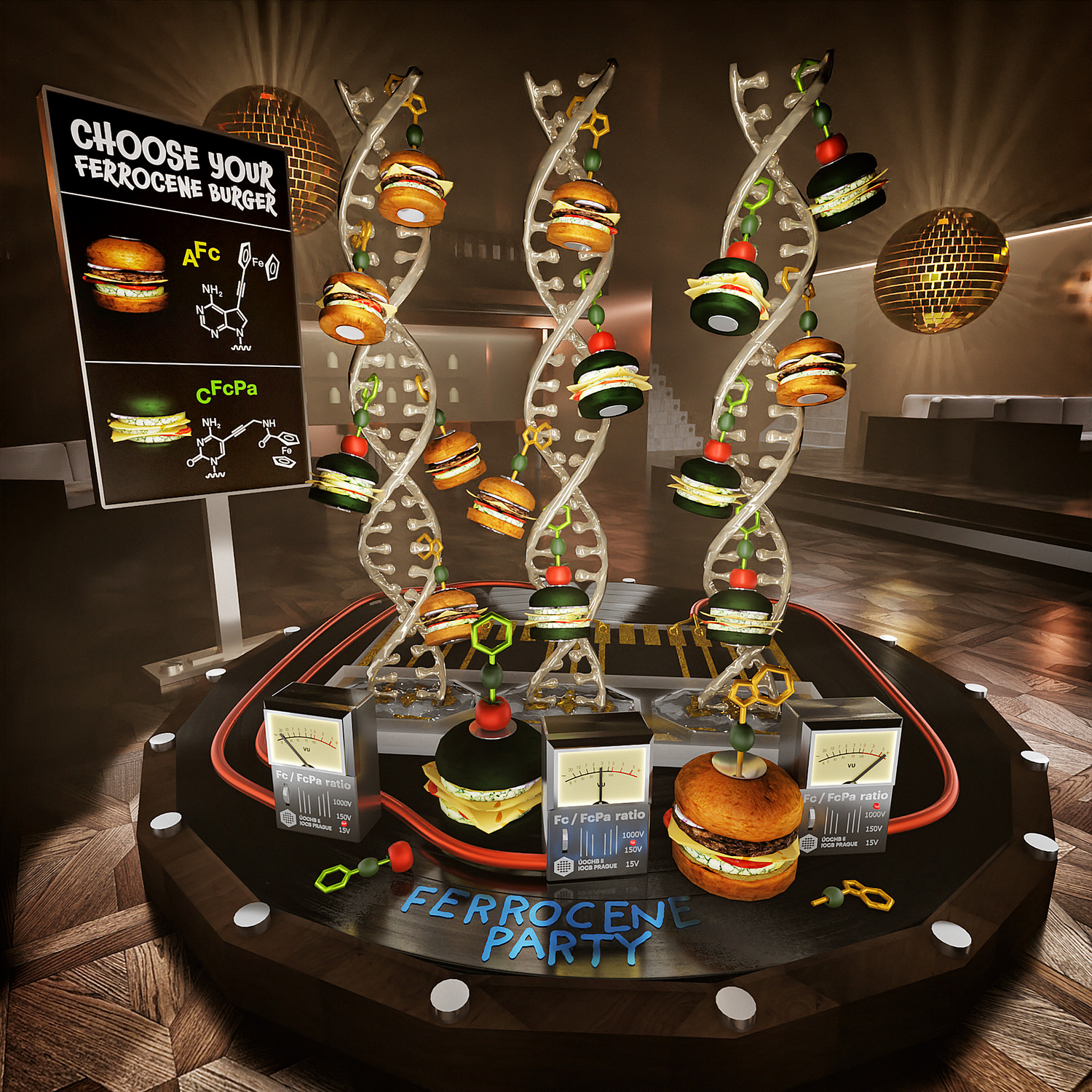Twitter feed
Folow us
Take the step towards a career in organic chemistry and biochemistry...
Publications
All publications
Duplex Electrochemical DNA Sensor to Detect Bacillus anthracis CAP and PAG DNA Targets Based on the Incorporation of Tailed Primers and Ferrocene-Labeled dATP
ACS Omega 4 (26): 21900-21908 (2019).
We report the duplex amplification of two plasmid DNA markers involved in the virulence of Bacillus anthracis, CAP and PAG, and the direct electrochemical detection of these amplicons. The method consists of the simultaneous amplification of the two targets in a single-pot reaction via polymerase chain reaction (PCR) using tailed primers and ferrocene-labeled dATP. Following amplification, the PCR products hybridize to probes immobilized on electrodes in a microfabricated electrode array chip. The incorporated ferrocene labeled dATP is then detected using square wave voltammetry. We evaluated the effect of electrolyte cations, anions, and concentration to condense, bend, and shrink double-stranded DNA and their effect on the intensity of the ferrocene signal. We obtained detection limits of 0.8 and 3.4 fM for CAP and PAG targets, respectively. We successfully developed a method to detect the presence of both targets in genomic DNA extracted from real samples.
Reductant‐Induced Free Radical Fluoroalkylation of Nitrogen Heterocycles and Innate Aromatic Amino Acid Residues in Peptides and Proteins
Chemistry - A European Journal 25 (69): 15779-15785 (2019).
Structure of the yellow fever NS5 protein reveals conserved drug targets shared among flaviviruses
Antiviral Research 169 (-): Early View (2019).
Spin modification of iron(ii) complexes via covalent (dative) and dispersion guided non-covalent bonding with N-heterocyclic carbenes: DFT, DLPNO-CCSD(T) and MCSCF studies
Dalton Transactions 49 (1): 164-170 (2020).






